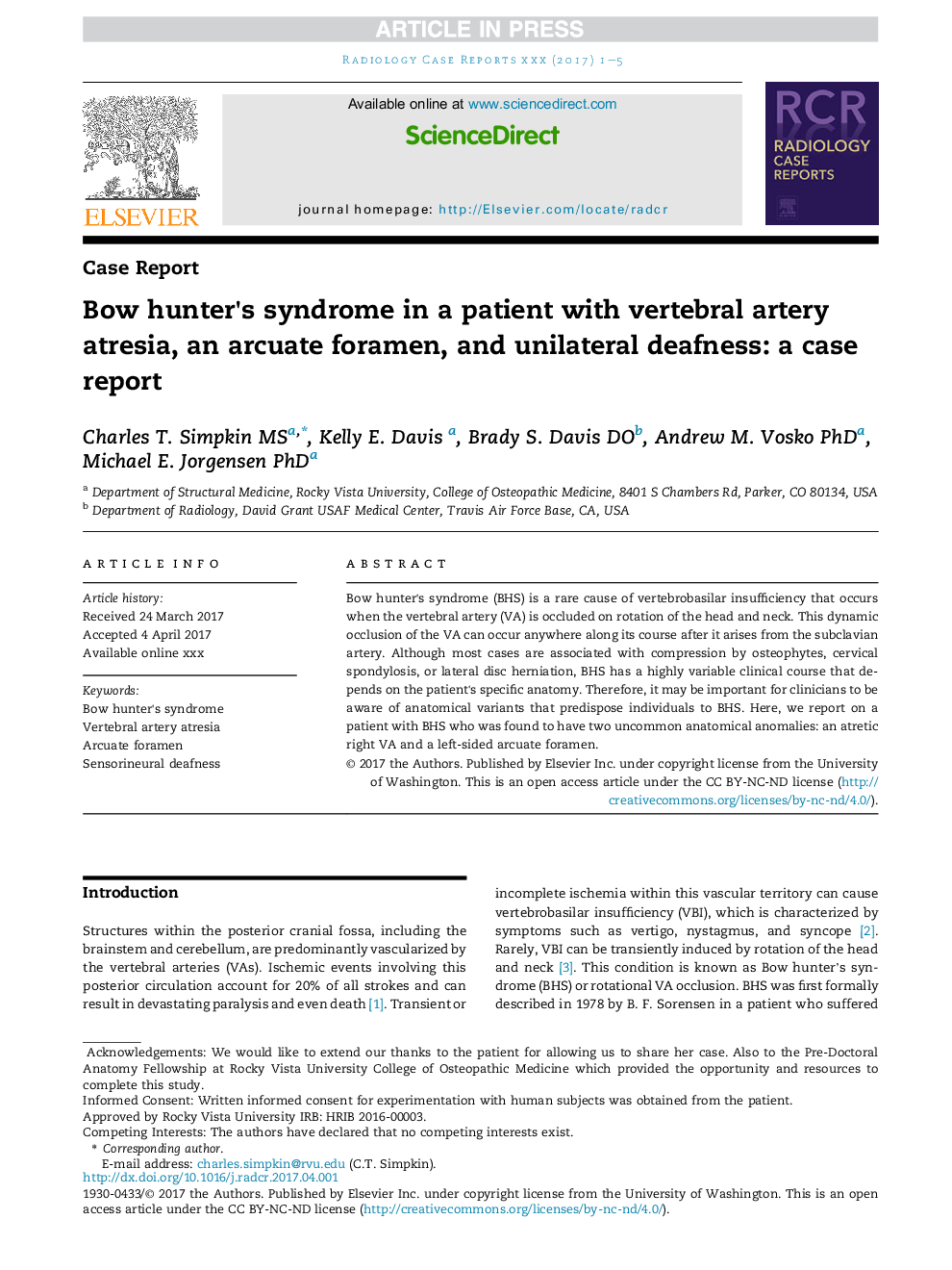| Article ID | Journal | Published Year | Pages | File Type |
|---|---|---|---|---|
| 8825365 | Radiology Case Reports | 2017 | 5 Pages |
Abstract
Bow hunter's syndrome (BHS) is a rare cause of vertebrobasilar insufficiency that occurs when the vertebral artery (VA) is occluded on rotation of the head and neck. This dynamic occlusion of the VA can occur anywhere along its course after it arises from the subclavian artery. Although most cases are associated with compression by osteophytes, cervical spondylosis, or lateral disc herniation, BHS has a highly variable clinical course that depends on the patient's specific anatomy. Therefore, it may be important for clinicians to be aware of anatomical variants that predispose individuals to BHS. Here, we report on a patient with BHS who was found to have two uncommon anatomical anomalies: an atretic right VA and a left-sided arcuate foramen.
Related Topics
Health Sciences
Medicine and Dentistry
Radiology and Imaging
Authors
Charles T. MS, Kelly E. Davis, Brady S. DO, Andrew M. PhD, Michael E. PhD,
